Most urban environments settle into predictable color palettes of gray concrete, red brick, and weathered steel that blend into forgettable backgrounds. Yet scattered across the globe, entire communities have embraced vibrant hues as defining characteristics, transforming ordinary streets into kaleidoscopic experiences that challenge every assumption about urban design.
These chromatic destinations prove that color can become a community’s signature, whether applied for practical reasons, cultural traditions, or pure artistic expression. Here is a list of 18 cities and towns where vivid colors define the local character and create some of the world’s most photogenic urban landscapes.
Burano, Italy
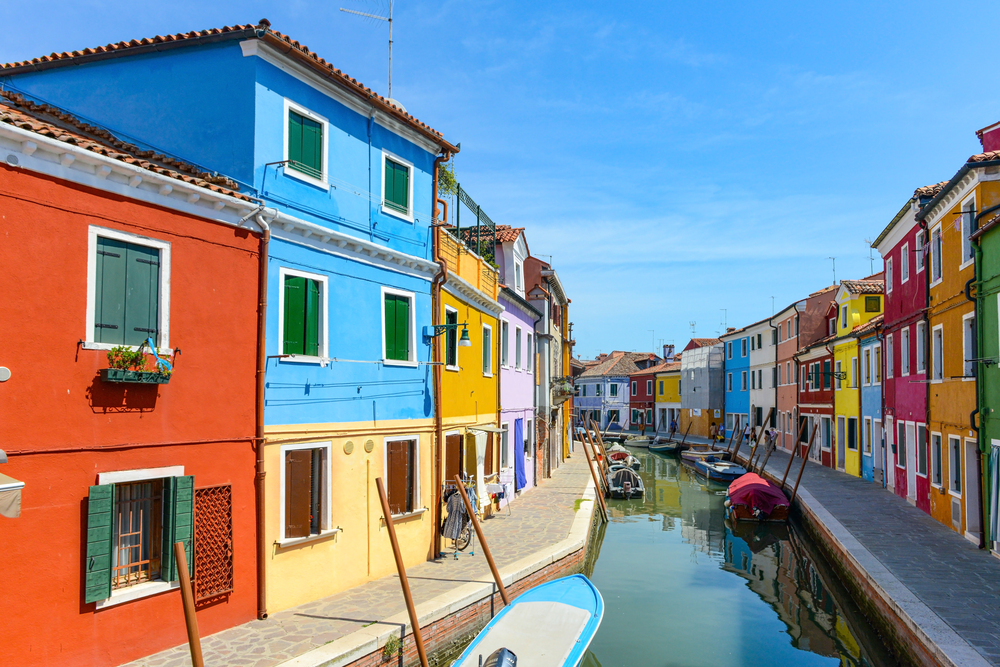
This Venetian lagoon island requires residents to paint their homes in specific bright colors according to a government-regulated system that ensures no two adjacent buildings share the same hue. The tradition allegedly began as a practical measure to help fishermen identify their homes through morning fog but has evolved into a carefully orchestrated rainbow that attracts photographers from around the world.
Canals reflect the brilliant facades, doubling the color intensity, while narrow streets create intimate corridors of pure chromatic delight.
Chefchaouen, Morocco
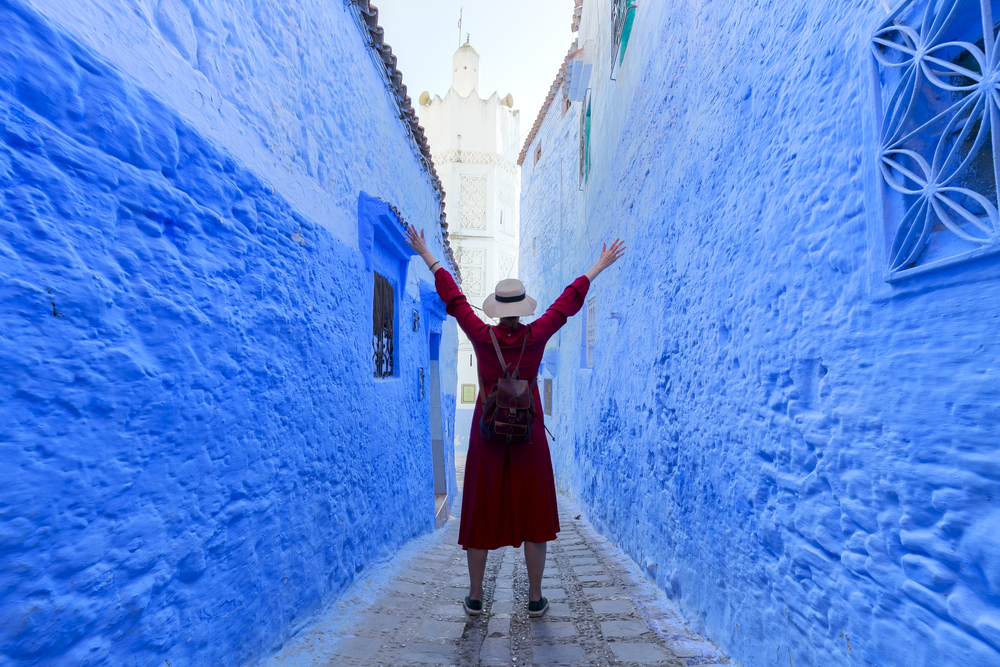
The entire medina of this Rif Mountain town is painted in varying shades of blue, from powder blue to deep indigo, creating a monochromatic dreamscape that feels both ethereal and intensely saturated. Jewish refugees who settled here in the 1930s are credited with introducing the blue painting tradition, though locals now maintain it as a symbol of spiritual protection and community identity.
The blue extends beyond building facades to include stairs, doorways, flower pots, and even street curbs, creating total immersion in this singular color.
Like Travel Pug’s content? Follow us on MSN.
La Boca, Buenos Aires

The Caminito neighborhood explodes with primary colors that originated when residents used leftover ship paint to decorate their corrugated metal homes in the early 1900s. Each building sports multiple bright hues in seemingly random combinations that create a patchwork effect visible from blocks away.
Street artists and muralists have embraced the tradition, adding layers of color that constantly evolve while tango dancers perform against backdrops of red, yellow, and blue buildings.
Guanajuato, Mexico
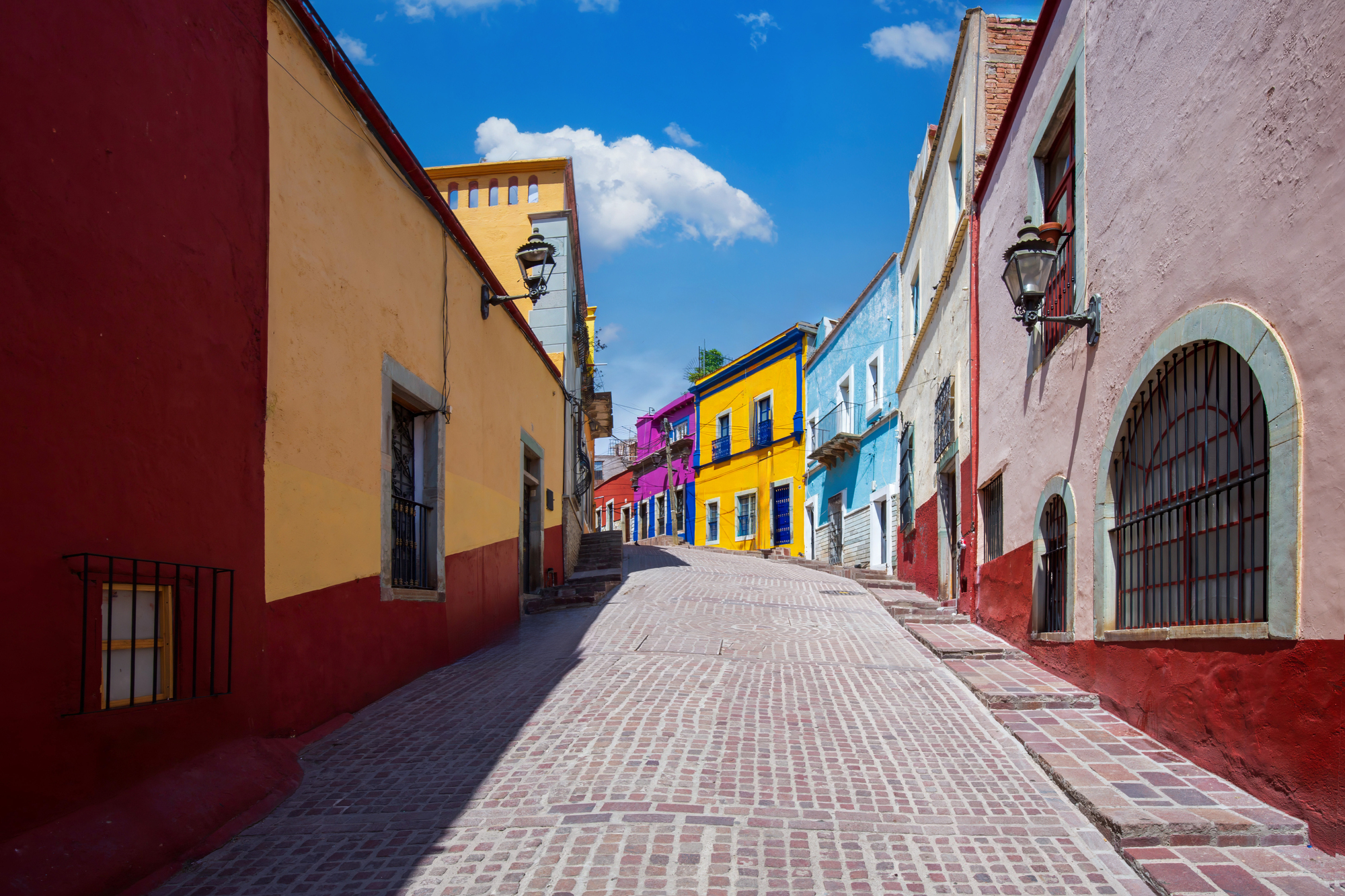
This UNESCO World Heritage colonial city cascades down hillsides in a riot of pink, orange, yellow, and greenhouses that create a natural amphitheater of color. The tradition of painting homes in bright hues dates back centuries, when different colors identified various neighborhoods and social classes within the silver mining community.
Narrow alleyways concentrate the color intensity, while elevated viewpoints reveal the full spectrum of this vertical rainbow spreading across the mountainous terrain.
Willemstad, Curaçao
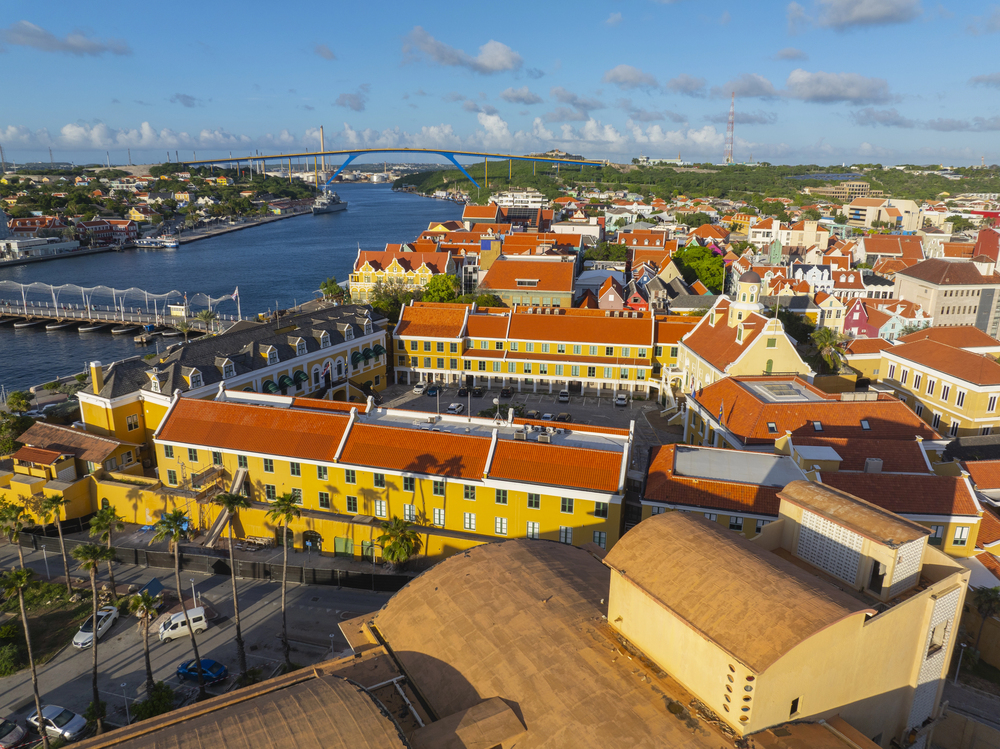
The Dutch colonial architecture of this Caribbean capital showcases pastel interpretations of European building styles, where traditional gables and shutters appear in mint green, coral pink, and sunshine yellow. Legend claims the colonial governor banned white buildings because the glare gave him headaches, though the more likely explanation involves practical concerns about tropical sun reflection.
The harbor waterfront creates perfect symmetry between the colorful facades above and their reflections in the Caribbean waters below.
Like Travel Pug’s content? Follow us on MSN.
Jodhpur, India

Known as the ‘Blue City,’ this Rajasthani destination features thousands of indigo-painted houses clustered around the imposing Mehrangarh Fort that towers above the azure cityscape. The blue color traditionally identified Brahmin homes, but has spread throughout the old city as residents discovered its practical benefits for repelling insects and reflecting heat.
Viewed from the fort walls, the blue houses create a mesmerizing pattern that extends to the horizon, interrupted only by occasional white temples and red sandstone buildings.
Valparaíso, Chile

This Pacific port city transforms steep hillsides into vertical canvases where street artists and residents collaborate to create one of South America’s most colorful urban landscapes. Earthquake-prone construction has historically used lightweight materials that accept paint readily, while the city’s Bohemian culture embraces artistic expression as community identity.
Cable cars and funiculars provide elevated perspectives on the hillside murals, while narrow streets at sea level offer intimate encounters with the painted walls.
Procida, Italy

This small island in the Bay of Naples features waterfront houses painted in gelato colors—lemon yellow, pistachio green, and berry pink—that create postcard-perfect views from arriving ferries. The tradition supposedly helped fishermen identify their homes from the water, though the effect today is purely aesthetic, as the practical fishing industry has largely given way to tourism.
Terra Marina beach provides the perfect vantage point for photographing the colorful harbor, where fishing boats painted in coordinating colors complete the chromatic harmony.
Like Travel Pug’s content? Follow us on MSN.
Nyhavn, Copenhagen

The 17th-century waterfront district showcases a parade of narrow townhouses in candy colors that reflect perfectly in the canal waters, creating one of Europe’s most photographed urban scenes. Hans Christian Andersen lived in several of these colorful buildings, including the bright yellow house at number 20, where he wrote his first fairy tales.
Modern restaurants and cafés occupy the ground floors, while the upper stories maintain their historical residential character, preserving the neighborhood’s lived-in authenticity despite its tourist popularity.
Riomaggiore, Italy

This Cinque Terre village clings to coastal cliffs in a vertical arrangement of houses painted in warm Mediterranean colors—terracotta orange, golden yellow, and deep rose—that glow intensely in the Ligurian sunlight. The colors follow traditional Ligurian coastal painting customs, where each family maintained specific color combinations passed down through generations.
Narrow streets barely wide enough for pedestrians create intimate encounters with the painted facades, while coastal hiking trails provide dramatic elevated views of the colorful village against the blue Mediterranean.
Rainbow Row, Charleston
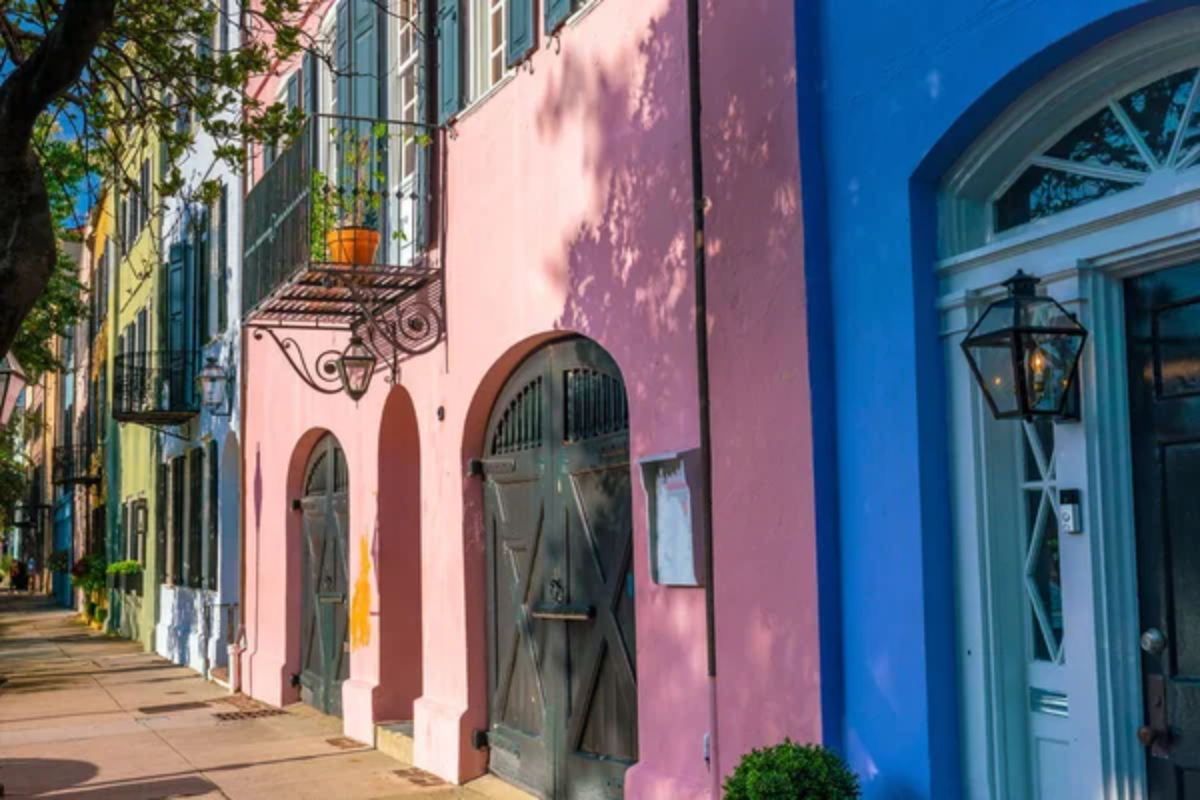
This iconic stretch of Georgian colonial townhouses represents the longest cluster of colorful historical buildings in the United States, where 13 consecutive homes showcase pastel interpretations of Caribbean colonial colors. The buildings date to the 1740s but received their distinctive paint scheme in the 1930s when preservationist Dorothy Porcher Legge restored them using colors inspired by her travels to the West Indies.
The morning light enhances the subtle color variations, while horse-drawn carriage tours provide the classic perspective on these architectural gems.
Like Travel Pug’s content? Follow us on MSN.
Izamal, Mexico
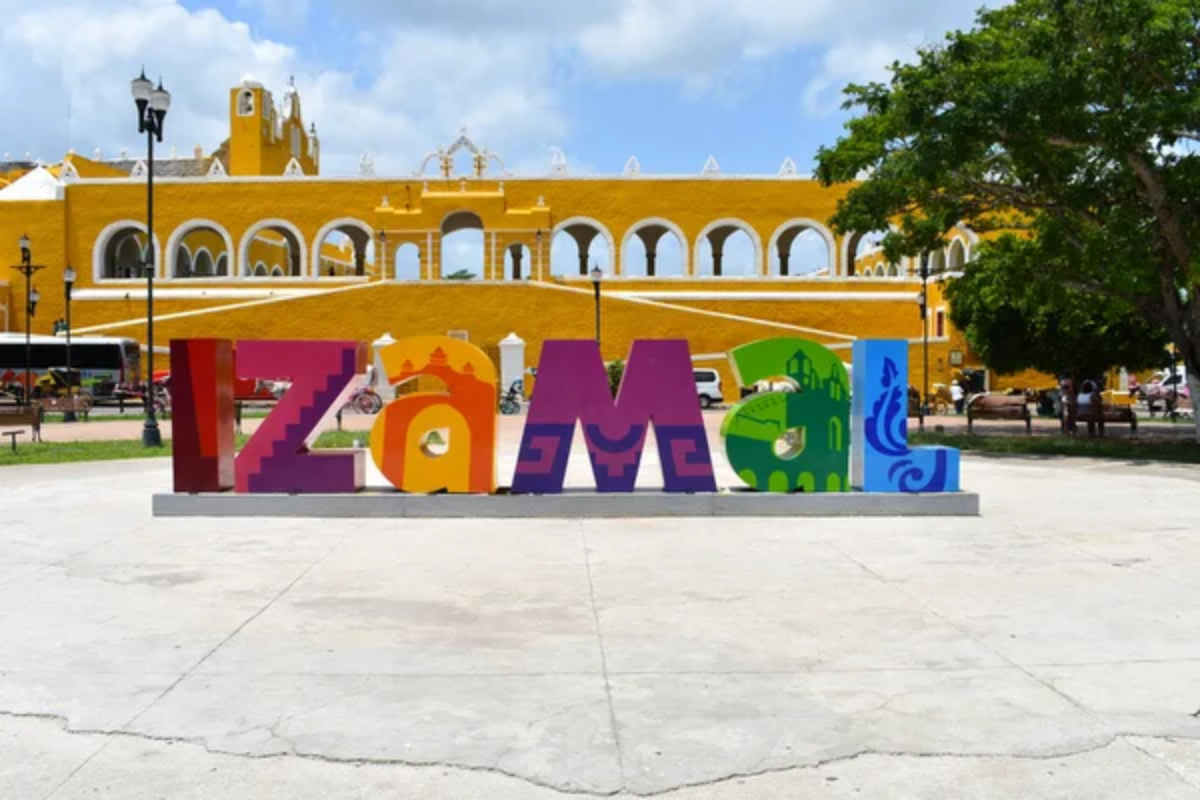
Known as the ‘Yellow City,’ this Yucatan colonial town paints virtually every building in golden yellow, creating a monochromatic experience that feels both ancient and timeless. The color choice honors the Mayan sun god while providing practical benefits in the tropical climate, as yellow paint reflects heat more effectively than darker colors.
The massive Franciscan monastery dominates the central plaza in matching yellow, while the surrounding streets extend the golden theme to create complete visual unity throughout the historic center.
Manarola, Italy

Another Cinque Terre village, this coastal community arranges its colorful houses in dramatic vertical tiers that descend directly into the Mediterranean Sea, creating amphitheater-like arrangements of painted facades. The colors follow strict local regulations that preserve traditional Ligurian coastal aesthetics while allowing individual expression within prescribed palettes.
The famous Via dell’Amore coastal path provides spectacular views of the village’s color arrangement, while local vineyards on surrounding terraces add green geometric patterns to the chromatic landscape.
Bo-Kaap, Cape Town
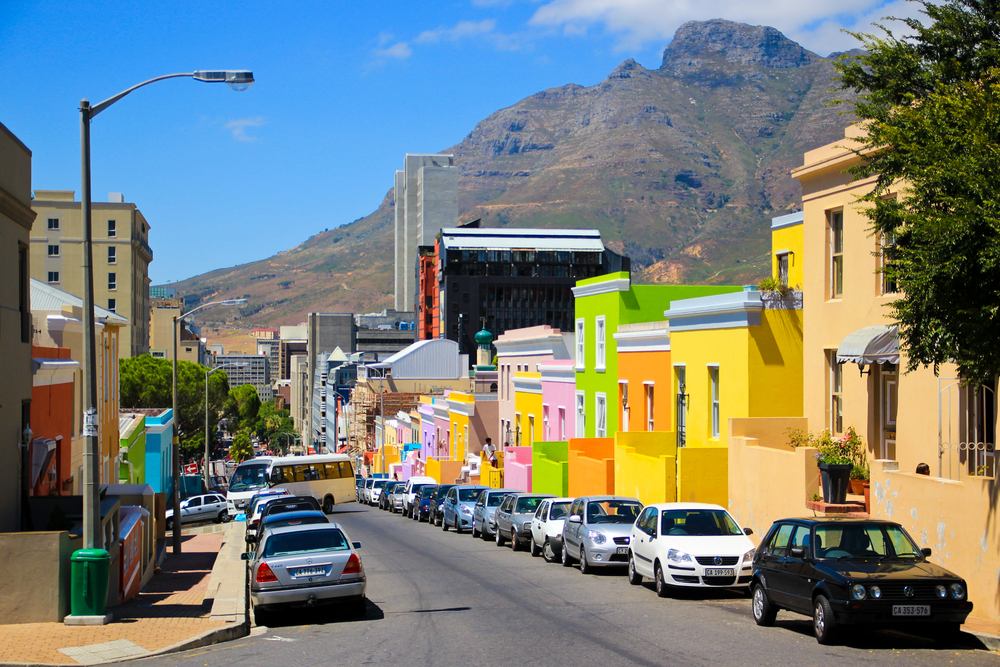
This historic Muslim quarter features rows of Georgian and Victorian houses painted in jewel tones—emerald green, sapphire blue, ruby red—that create one of Africa’s most vibrant neighborhoods. The colorful tradition began in the 1960s as residents expressed newfound freedom after apartheid laws were relaxed, transforming what had been a uniformly white neighborhood into a celebration of cultural identity.
The steep cobblestone streets concentrate the color impact, while Table Mountain provides a dramatic backdrop that emphasizes the vivid hues.
Like Travel Pug’s content? Follow us on MSN.
Vernazza, Italy

The third Cinque Terre village on this list earns its place through sheer dramatic impact, where colorful houses cluster around a natural harbor protected by ancient stone fortifications. The medieval tower dominates the skyline while houses in coral, amber, and sage create a perfect color harmony that has evolved over centuries of Mediterranean living.
The village’s compact size intensifies the color concentration, while the surrounding vineyards and olive groves provide natural green frames that enhance the painted facades.
Portmeirion, Wales
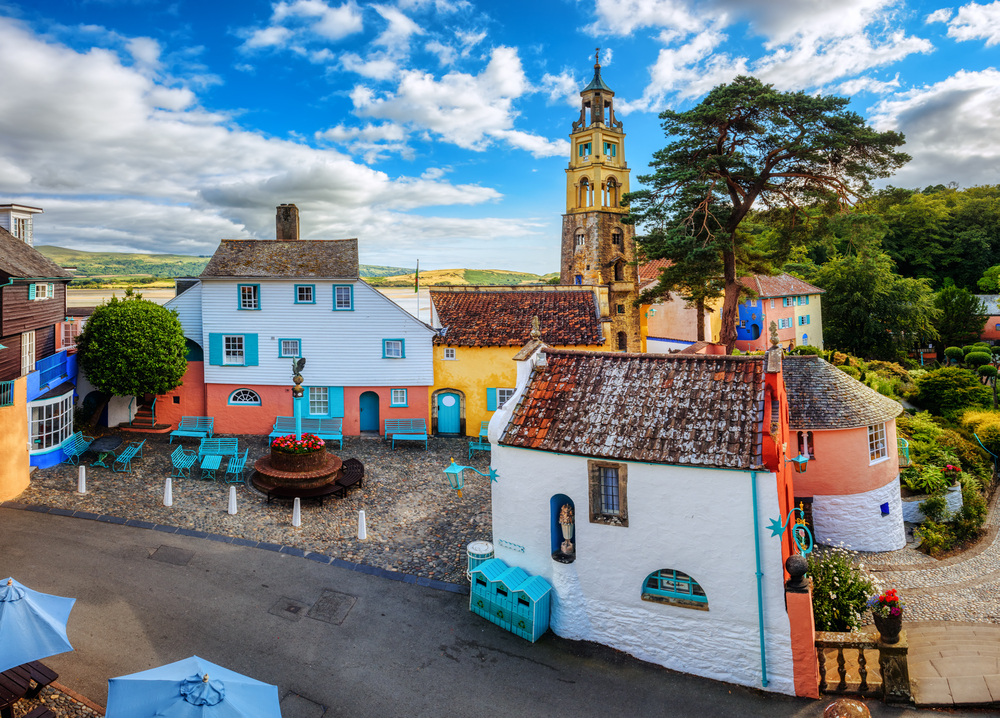
This fantasy village was designed as a complete architectural folly in the 1920s, where buildings inspired by Italian coastal towns received whimsical color treatments that created a storybook atmosphere in the Welsh countryside. Sir Clough Williams-Ellis deliberately mixed architectural styles and colors to create what he called a ‘home for fallen buildings,’ rescuing fragments from demolished structures across Britain.
The result combines Baroque facades with cottage gardens, all painted in colors that would never appear together naturally but somehow create perfect harmony in this invented landscape.
St. John’s, Newfoundland

This Canadian provincial capital showcases ‘Jellybean Row’—a collection of downtown rowhouses painted in every conceivable bright color that creates one of North America’s most cheerful urban streetscapes. The tradition supposedly began when sailors returning from long voyages wanted to easily identify their homes from the harbor, though modern residents maintain the colors purely for their uplifting psychological effects during long Atlantic winters.
The steep hillside amplifies the visual impact, while fog rolling in from the ocean creates dramatic atmospheric effects around the colorful buildings.
Like Travel Pug’s content? Follow us on MSN.
Cartagena, Colombia
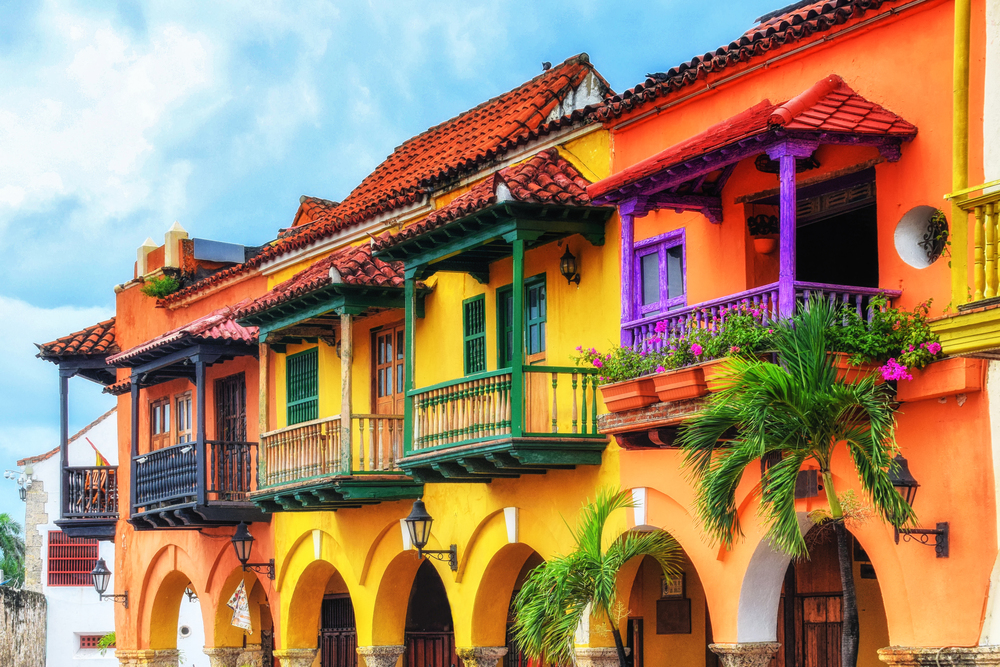
The colonial walled city features Spanish architecture painted in tropical colors that reflect both Caribbean climate adaptations and cultural celebrations of life in this historic port. Balconies dripping with bougainvillea complement walls painted in coral, turquoise, and mango, while narrow streets create intimate color corridors perfect for evening strolls.
The UNESCO World Heritage designation protects the color traditions while modern residents continue adding their interpretations to this centuries-old chromatic legacy.
Puebla, Mexico
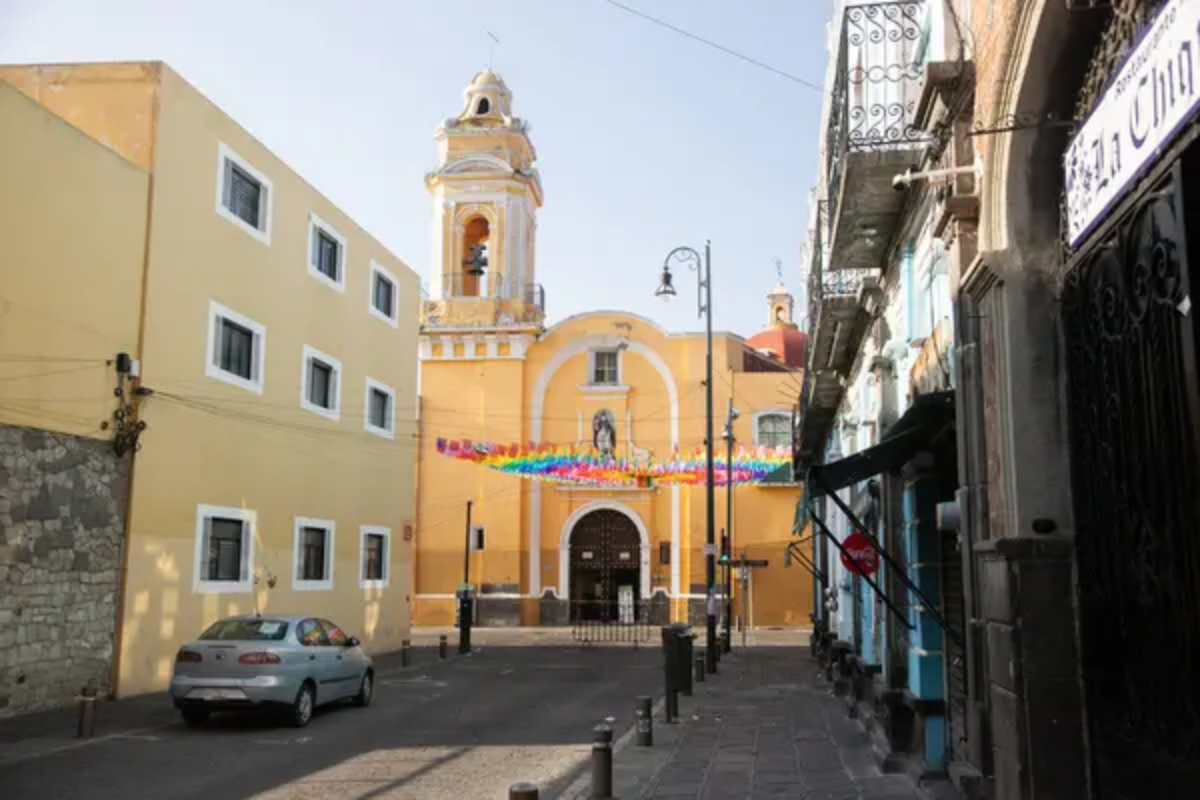
This colonial city in central Mexico blends Spanish Baroque, indigenous, and Moorish influences into a dazzling display of color and texture. Known for its Talavera tiles, Puebla’s buildings often feature intricate ceramic facades in cobalt blue, golden yellow, and burnt orange patterns that shimmer in the sunlight. The historic center—designated a UNESCO World Heritage Site—offers a visual feast of tile-covered churches, candy-colored townhouses, and ornate balconies.
Street-level scenes reveal a layered interplay of tile, stucco, and painted woodwork, making every walk through the city feel like a step into a living mosaic.
Where Color Becomes Culture

These destinations prove that color transcends mere decoration—it becomes identity, tradition, and community expression rolled into architectural statements that define entire places. Whether born from practical necessity, like helping fishermen navigate foggy waters, or emerging from pure artistic expression, these chromatic cities remind us that humans have an innate desire to surround themselves with beauty and meaning.
Each location offers a different interpretation of how color can transform ordinary urban environments into extraordinary experiences, creating places where simply walking down the street becomes an immersion in art, culture, and the fundamental human impulse to make life more beautiful than strictly necessary.
Like Travel Pug’s content? Follow us on MSN.
More from Travel Pug

- 20 Best Beach Towns in the Carolinas
- 13 Destinations Where Tourists Regularly Regret Their Trip
- 20 Destinations That Are More Magical Without an Itinerary
- 20 Underrated Adventures That Belong on Your Travel List
- 20 Cities Where You Should Just Wing It, No Planning Required
Like Travel Pug’s content? Follow us on MSN.
